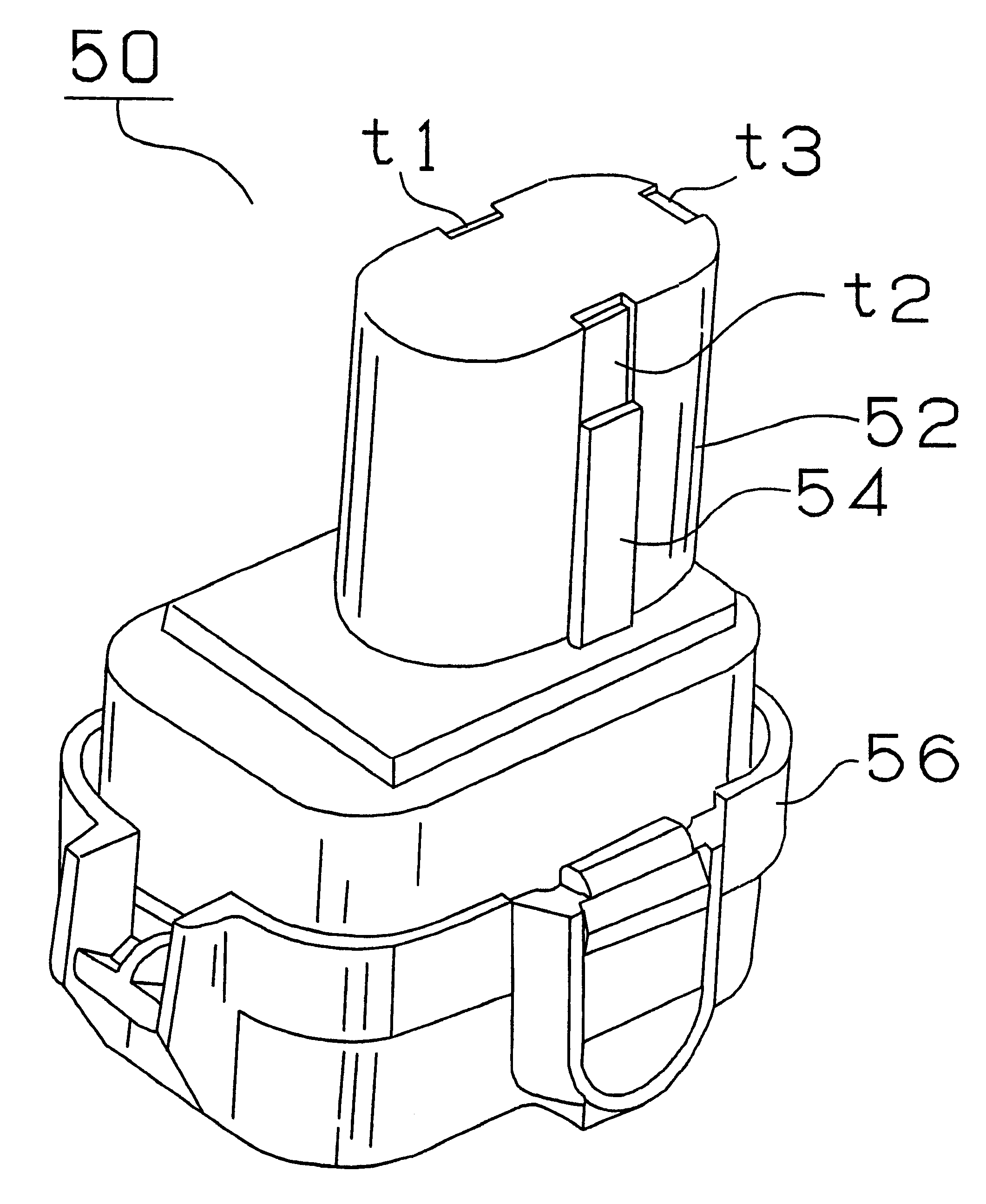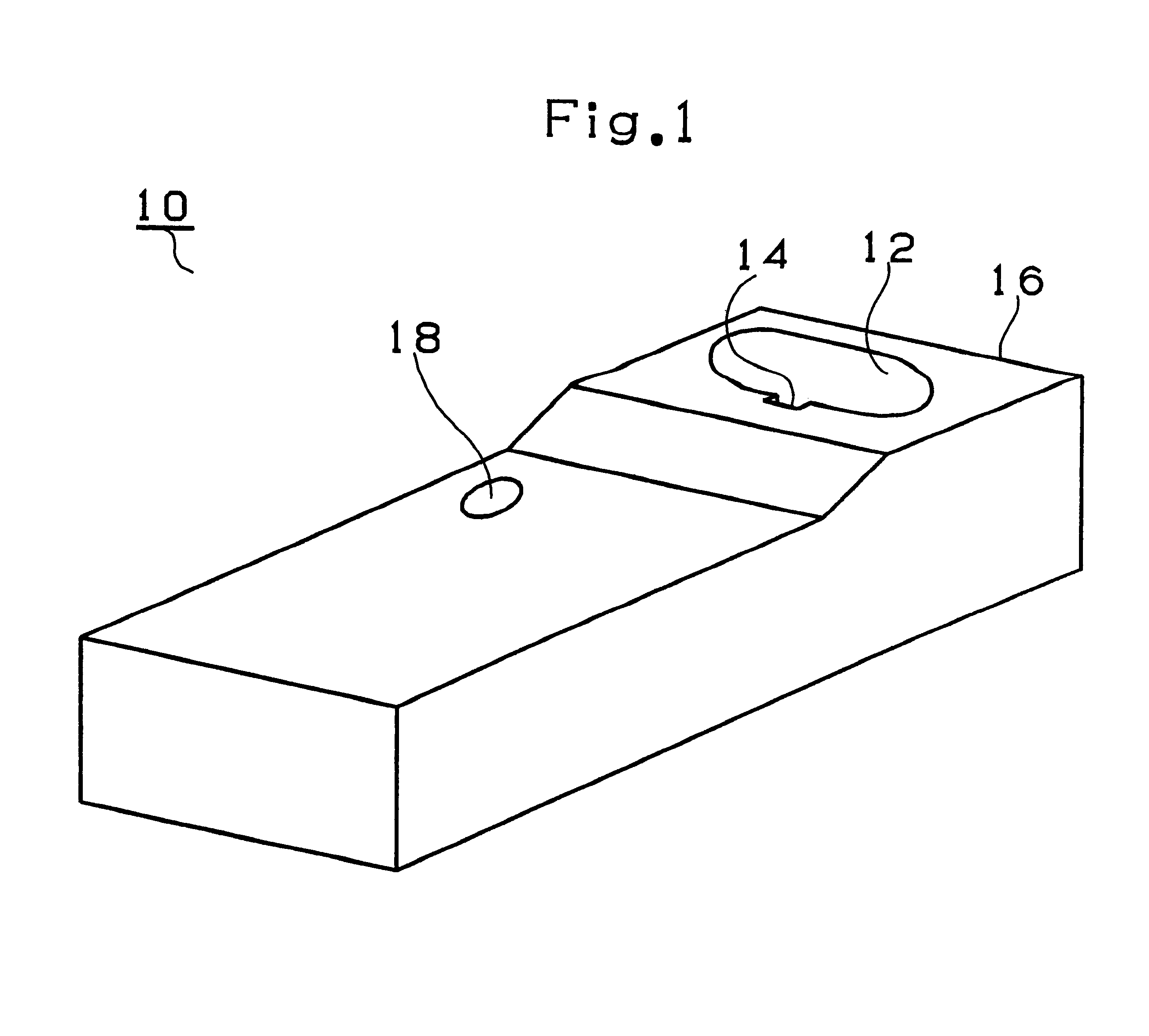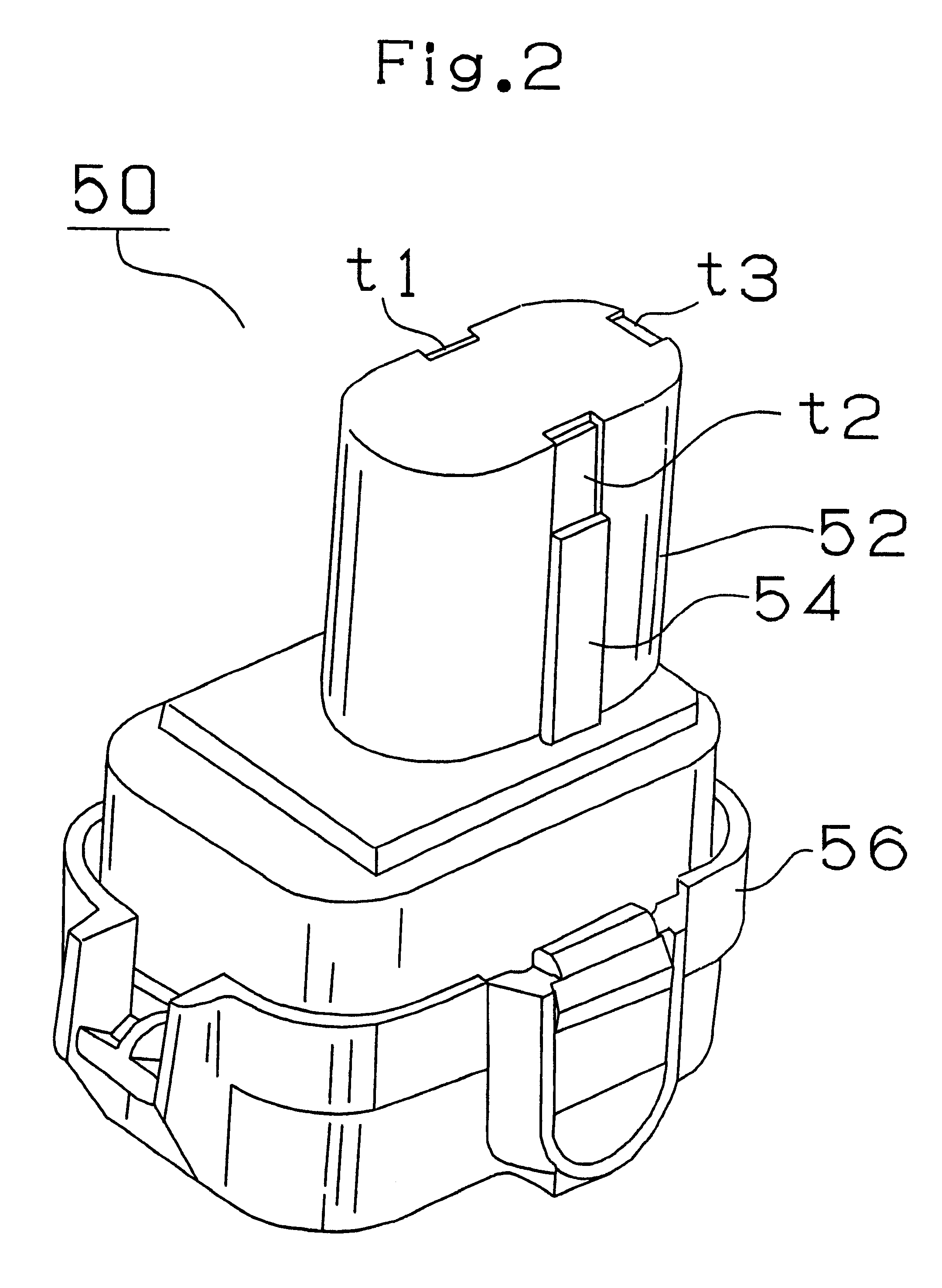Battery charger
a battery charger and battery technology, applied in the field of battery chargers, can solve the problems of shortened battery life, high heat generation while being charged, deterioration of the electrodes and separators of the cells within the battery,
- Summary
- Abstract
- Description
- Claims
- Application Information
AI Technical Summary
Benefits of technology
Problems solved by technology
Method used
Image
Examples
first embodiment
FIG. 1 shows a battery charger 10 in the first embodiment, FIG. 2 shows a battery pack 50 (for a nickel metal hydride battery) and FIG. 3 shows a battery drill 70 driven by the battery pack 50.
As shown in FIG. 2, the battery pack 50 containing a nickel metal hydride battery consists of a generally cylindrical fitted part 52 and a generally prismatic base 56. A key-shaped key part 54 is formed on the side of the fitted part 52 and the first input terminal t1 connected to the positive electrode of the battery, the second input terminal t2 connected to the negative electrode thereof and the third terminal t3 connected to a temperature detecting sensor consisting of a thermistor are arranged on the upper portion of the fitted part 52. The battery pack 50 is adapted to different voltages, i.e., 14.4 V, 12 V and 9.6 V, based on the difference in the number of battery cells contained therein.
As shown in FIG. 1, the battery charger 10 charging the battery packs 50 is provided with a fitting...
third embodiment
The processings by the battery charger in the third embodiment will be described with reference to FIGS. 13 and 14.
FIG. 13 shows the first half of the processings in the third embodiment. The processings in steps 12 to 50 in FIG. 13 are the same as those in the first embodiment described above with reference to FIGS. 8 and 9. Therefore, no description will be given thereto.
FIG. 14 shows the second half of the processings for completing battery charge in the third embodiment. In a step S136, it is determined whether a change in voltage dV / dt is less than Vc (a voltage decrease value at the time of full charge) set in the step S28, i.e., whether the battery state is in the final charging period. If it is determined that the battery state is in the final charging period (`Yes` in the step S136), the counter for determining charge completion is incremented by 1 (in a step S138). If it is determined that the battery is not in the final charging period from the change in voltage dV / dt (`N...
fourth embodiment
The processings by the battery charger in the fourth embodiment will be described with reference to FIG. 15.
FIG. 15 shows the second half of the processings in the fourth embodiment. Since the first half of the processings in the fourth embodiment are the same as that in the third embodiment described above with reference to FIG. 13, no description will be given thereto.
First, it is determined whether the retrieval target region based on battery temperature belongs to the final charging period region (1) shown in FIG. 5 in a step S232. If it belongs to the final charging period region (1) (`In` in the step S232), the counter is incremented by 3 (in a step S234). If it does not belong to the final charging region (1) (`Out` in the step S232), it is then determined whether the target region belongs to the final charging period region (2) shown in FIG. 5 (in a step S236). If it belongs to the final charging period region (2) (`In` in the step S236), the counter is incremented by 6 (in ...
PUM
| Property | Measurement | Unit |
|---|---|---|
| voltages | aaaaa | aaaaa |
| voltages | aaaaa | aaaaa |
| voltages | aaaaa | aaaaa |
Abstract
Description
Claims
Application Information
 Login to View More
Login to View More - R&D
- Intellectual Property
- Life Sciences
- Materials
- Tech Scout
- Unparalleled Data Quality
- Higher Quality Content
- 60% Fewer Hallucinations
Browse by: Latest US Patents, China's latest patents, Technical Efficacy Thesaurus, Application Domain, Technology Topic, Popular Technical Reports.
© 2025 PatSnap. All rights reserved.Legal|Privacy policy|Modern Slavery Act Transparency Statement|Sitemap|About US| Contact US: help@patsnap.com



